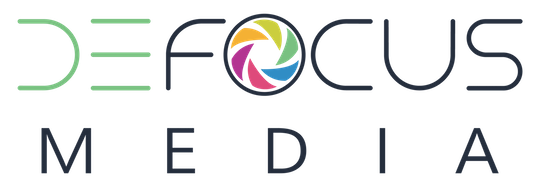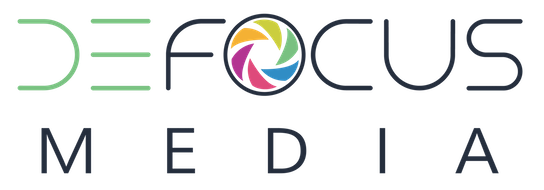Podcast: Play in new window | Download | Embed
Subscribe: Apple Podcasts | Spotify | Amazon Music | Android | RSS
Key Takeaways
- What is GA? Geographic Atrophy is the advanced stage of dry age-related macular degeneration (AMD) that causes irreversible central vision loss. Understanding what is GA is the first step to recognizing its impact on patients’ independence.
- What is GA progression? GA progression refers to the steady enlargement of atrophic lesions over time. Monitoring with OCT, FAF, and NIR helps eye care professionals track GA progression and determine when referral is needed.
- IZERVAY injection offers new hope. Patients frequently ask what is IZERVAY, what is IZERVAY used for, how does an IZERVAY eye injection work, and what about IZERVAY cost. Izervay is the first FDA-approved therapy to slow GA progression, shifting the management of AMD into a proactive phase.

When patients hear the term AMD, they often think of the “wet” form of the disease and assume that the “dry” form is safer. But eye care professionals know that the advanced stage of dry AMD, called Geographic Atrophy (GA), is anything but safe. The most common questions today are simple but critical: What is GA? What is GA progression? These two questions frame every clinical conversation because GA is both common in aging populations and devastating to vision.
GA is now recognized as a major cause of blindness worldwide, and with an aging population, the number of affected patients is expected to rise sharply. Even more concerning is GA progression, the process where areas of atrophy steadily expand, robbing patients of functional central vision. Until recently, clinicians had little to offer beyond lifestyle recommendations and low vision support. But with new treatments such as the IZERVAY injection, patients finally have options to slow down the disease.
In this episode of the Four-Eyed Professor podcast, Dr. Chris Lievens and Dr. Jessica Steen discussed how to recognize GA, how to monitor its progression, and how to guide patients through treatment discussions. Optometrists are increasingly asked not only what IZERVAY is and what it is used for, but also practical questions about how an IZERVAY eye injection works and what patients should expect.
Table of Contents
What is Geographic Atrophy?
Geographic Atrophy (GA) is the late stage of dry age-related macular degeneration (AMD). It is defined by irreversible loss of retinal pigment epithelium (RPE) cells and the overlying photoreceptors within the macula. This leads to well-demarcated patches of atrophy that can be identified on fundus examination and confirmed with imaging. Unlike wet AMD, GA does not involve abnormal blood vessel growth or fluid leakage. However, the impact on vision can be just as severe.
Patients with GA often describe missing spots or blank areas in their vision, blurred or distorted central vision, and increasing difficulty with reading or recognizing faces. As the lesions expand, daily tasks such as driving, shopping, and independent living become more challenging. The disease does not typically affect peripheral vision until later, but central vision loss can be devastating even in the early stages. Without intervention, GA is relentlessly progressive. Knowing what is GA is not simply an academic exercise—it is the foundation for early detection and patient education, helping individuals understand the seriousness of their diagnosis.
What is GA Progression?
GA progression refers to the enlargement of areas of atrophy over time. Once GA begins, progression is inevitable, though the rate varies significantly among patients. Lesions that start near the fovea or that are multifocal often expand more quickly, leading to earlier loss of central vision. Certain imaging findings are strongly predictive of faster GA progression. Hyperautofluorescent rings on fundus autofluorescence indicate metabolically stressed areas that are likely to enlarge soon. On OCT, biomarkers such as drusen regression, sub-RPE illumination, and choroidal hypertransmission—the so-called barcode sign—signal active disease. Subretinal drusenoid deposits and reticular pseudodrusen are additional indicators of aggressive disease.
Clinically, understanding what is GA progression allows optometrists to make timely referrals and counsel patients realistically about their visual future. For patients, seeing progression mapped out on serial imaging can be eye-opening. It transforms an invisible disease into something measurable, and it emphasizes the importance of proactive care. With treatments like the IZERVAY injection now available, detecting progression early has never been more valuable.
Imaging Geographic Atrophy Progression
Advanced imaging is essential to define both what is GA and what is GA progression. OCT is the cornerstone of GA diagnosis and monitoring. By carefully reviewing B-scans, clinicians can identify RPE loss, photoreceptor thinning, and outer retinal atrophy. Quantitative metrics, such as drusen volume or lesion size, help track changes over time. Near-infrared reflectance imaging highlights early GA as brighter patches, often before clinical exam findings are apparent. Fundus autofluorescence provides unique insights into lesion borders, showing hyperautofluorescent rims that predict faster expansion. Widefield retinal imaging can capture multifocal lesions across the posterior pole, and multimodal imaging integrates these tools for the most complete picture.
For optometrists, consistent use of these technologies transforms subjective assessment into objective documentation. It allows them to answer what is GA progression not only in words but with clear visual evidence that can be shown to patients and families.
Referral Timing in Geographic Atrophy
Referral decisions should always be guided by both the presence of GA and the pace of progression. Evidence of GA progression—whether qualitative or quantitative—should trigger a referral to a retina specialist. Aligning with local retina practices ensures that patients are evaluated at the right time for treatment options such as the IZERVAY eye injection. Importantly, the threshold for referral has shifted. In the past, optometrists may have waited until vision loss was profound. Today, earlier referral is preferred to preserve as much vision as possible. Patients themselves are increasingly knowledgeable, and many ask directly about IZERVAY. Erring on the side of early referral ensures patients are not left wondering whether they missed their chance for therapy.
IZERVAY: Treatment and Cost Considerations
What is IZERVAY? Izervay is the first FDA-approved therapy for Geographic Atrophy secondary to AMD. What is IZERVAY used for? Its purpose is to slow GA progression, reducing the rate at which lesions enlarge and preserving functional vision for longer. IZERVAY is delivered as an intravitreal injection—commonly called an IZERVAY eye injection—administered by a retina specialist. Treatments are typically given every month or every other month, and long-term adherence is necessary for effectiveness.
IZERVAY cost is a frequent question from patients and families. While exact costs vary depending on insurance, coverage, and practice setting, patients often seek clarity upfront. Cost should be addressed as part of the broader treatment conversation, even though final financial details are typically managed by the retina clinic. Patient assistance programs may also help improve affordability and access.
Take-home: The role of the optometrist is to identify what GA is, track what is GA progression, and guide patients toward retina specialists for IZERVAY injection therapy when appropriate—while preparing them for patient-centered discussions around IZERVAY cost.
Supporting Patients and Families
Explaining what is GA and what is GA progression can be emotionally challenging. Many patients fear blindness and are overwhelmed when they hear the diagnosis. It is important to frame the conversation carefully: GA cannot be cured, but its progression can now be slowed with therapies like IZERVAY. Reassuring patients that proactive care makes a difference gives them a sense of control. Clinicians should also emphasize lifestyle modifications such as AREDS supplementation, adherence to a Mediterranean diet, smoking cessation, and regular exercise. These steps complement clinical care and empower patients to participate in their management. Early referral to low vision services is equally critical. Even before vision loss becomes severe, patients can benefit from training, magnification devices, and environmental modifications that preserve independence. Families should be included in every step, as they are often key to supporting adherence to treatment schedules and lifestyle recommendations.
Understanding what is GA and what is GA progression is now central to optometric care. With diagnostic imaging, structured monitoring, timely referral, and new treatments such as the IZERVAY injection, eye care professionals have more tools than ever to slow vision loss and improve patient outcomes. The message to patients is clear: GA is serious, but it is no longer untreatable. Optometrists should standardize GA protocols, align with retina specialists, and be prepared to answer patient questions about what IZERVAY is, its uses, how IZERVAY eye injections work, and what to expect regarding IZERVAY costs. By doing so, they can give patients both clarity and hope in the face of a challenging diagnosis.


